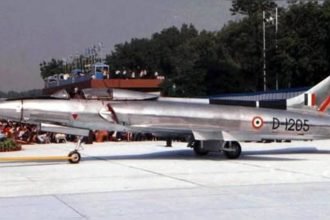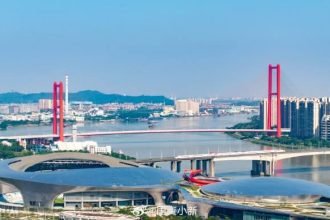Russian Scientists Send Strawberry Seeds to Space for Groundbreaking Experiment
In a bold move that pushes the boundaries of agricultural science and space research, Russian scientists have embarked on an ambitious experiment: sending strawberry seeds to space. This project is more than just a novelty—it represents a crucial step toward understanding how plants respond to the harsh and unpredictable conditions of outer space. Conducted by the Siberian Federal Scientific Center for Agrobiotechnology (SFNCA) of the Russian Academy of Sciences, the study aims to explore whether the seeds of remontant strawberry varieties—known for their multiple harvests and strong disease resistance—can retain or even improve their qualities after exposure to space conditions.
The Mission and Its Purpose
Space farming is no longer a concept confined to science fiction. As humanity sets its sights on long-term space exploration and even colonization of other planets, developing crops that can withstand the unique challenges of space is essential. The strawberry seed experiment is one of several initiatives focused on determining how microgravity, cosmic radiation, and extreme temperature variations impact plant development.
Specifically, Russian scientists aim to discover whether the seeds’ germination rate and immunity will change after being exposed to orbital conditions. The goal is not just academic—results from this research could lead to the development of hardier, more productive crops both in space and on Earth, especially in regions with poor growing conditions.
Why Strawberries?
Strawberries are more than just a popular fruit. The varieties selected for the experiment are remontant strawberries, which are capable of producing several harvests during a single growing season. They are also recognized for their enhanced taste and natural resistance to certain diseases. These features make them a valuable candidate for study, as scientists are interested in how these qualities might be preserved or altered in space.
Another reason for choosing strawberries is their relatively short life cycle and high economic value. If such plants can be grown in space, it could lead to quicker food production cycles for astronauts on long-term missions.
How the Experiment Works
The experiment involves sending a batch of strawberry seeds to the International Space Station (ISS) while retaining a control group on Earth. Once the seeds return from orbit, researchers will compare their growth rates, germination success, and immune responses against the Earth-bound group. This comparative analysis will reveal any differences that may have resulted from exposure to microgravity and other space factors.
Interestingly, it is not yet confirmed how long the seeds will remain in orbit, as part of the study’s flexibility is to monitor and adjust based on how the seeds react to space over time. The longer the exposure, the more meaningful the data for long-term space missions and agricultural development.
Previous Experiments and Lessons Learned
This is not the first time Russian scientists have tested the effects of space on agriculture. The SFNCA has previously sent seeds of various crops—including wheat, peas, soybeans, and rapeseed—into space to measure their resilience and potential for cultivation under extreme conditions.
The results were enlightening. Among the crops tested, wheat seeds showed the highest resilience, boasting a germination rate of over 80% after spending more than 1.5 years in space. Rapeseed followed in terms of performance. Surprisingly, soybeans—which generally yield high outputs on Earth—showed the weakest results in space, highlighting that Earth-based productivity does not always translate into orbital resilience.
These results have laid a strong foundation for the current strawberry seed experiment, offering both a benchmark for comparison and insights into which characteristics might affect a plant’s success in space.
Collaboration with Other Institutions
The strawberry seed experiment is just one part of a broader strategy by Russian scientists to explore space agriculture. Another notable project involves Korolev Samara University, where scientists have selected 20 species of rare plants to be sent into space aboard the Bion-M No. 2 biosatellite.
This wider initiative aims to provide a comprehensive look at how various plant types react to space exposure. By studying a broad spectrum of plant species, researchers hope to uncover patterns and correlations that can lead to genetic improvements and more resilient crop varieties for future generations.
The Importance of Space Agriculture
As space agencies and private companies race toward establishing permanent human settlements on the Moon and Mars, food security becomes a central issue. Traditional farming methods are not viable in these environments due to the lack of soil, atmospheric pressure, and stable climate. Therefore, space agriculture is key to sustaining long-duration missions.
Moreover, research like this also benefits Earth. Seeds exposed to space may develop unexpected traits—such as increased disease resistance, faster growth, or adaptability to poor soil conditions. Such traits can be invaluable for addressing global food shortages, especially in areas with arid climates or degraded soils.
What Comes Next?
Once the strawberry seeds complete their orbit and return to Earth, SFNCA scientists will begin the critical phase of germination trials and genetic analysis. They will look for changes in DNA expression, cellular structure, and immune function, comparing them with the control group that remained Earth-bound. Any significant findings could lead to a breakthrough in our understanding of plant biology under extraterrestrial conditions.
In the future, similar experiments may be extended to include not just seeds, but entire plants grown onboard space stations or lunar bases. This would allow scientists to examine the entire life cycle of crops in space, from germination to fruit production, and eventually, seed harvesting for continuous agricultural cycles.
Global Implications
While this is a Russian-led project, the implications are global. Countries around the world are investing in space research and agricultural technology, and collaboration across borders is likely to increase. Data and results from experiments like these are often shared in scientific journals and international conferences, contributing to the global knowledge pool.
It also highlights the growing convergence of two previously separate domains: agriculture and aerospace. As these fields become more intertwined, they open up new career paths, research opportunities, and technological innovations that could transform life on Earth and beyond.
Conclusion
Sending strawberry seeds to space might seem like a small step, but it represents a giant leap in the field of space agriculture. Through careful experimentation and comparison with Earth-based controls, scientists are laying the groundwork for the future of farming beyond our planet. With increasing interest in long-term space travel and the establishment of extraterrestrial colonies, understanding how crops behave in space is more critical than ever.
As Russian scientists continue to push the boundaries of what’s possible, the world watches closely. The lessons learned from these strawberry seeds may one day help feed astronauts on Mars—or even solve food security challenges right here on Earth.










